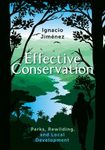Report
By: Charlotte Couch(Author), Martin Cheek(Author), Pépé Haba(Author), Denise Molmou(Author), Jenny Williams(Author), Sékou Magassouba(Author), Saïdou Doumbouya(Author), Muhammad Yaya Diallo(Author)
216 pages, colour photos, b/w line drawings, colour maps, colour tables
![Threatened Habitats and Tropical Important Plant Areas (TIPAs) of Guinea, West Africa Threatened Habitats and Tropical Important Plant Areas (TIPAs) of Guinea, West Africa]()
Click to have a closer look
About this book
Customer reviews
Related titles
Recommended titles
About this book
Guinea-Conakry has one of the highest plant diversities in Sub-Saharan West Africa and is part of the Upper Guinean Forest ecoregion and the Guinean Forests of West Africa biodiversity hotspot. This diversity is due in part to the highland ranges of the Fouta Djalon and Loma-Man and Nimba mountains. These high altitude forests and grasslands have resulted in endemic species and interesting distribution patterns. There are large areas of lowland forest in Guinée Forestière (Forest Guinea), and some areas in Guinée Maritime (Coastal Guinea) though most of these forests are highly fragmented and small (less than 1 km2), the largest intact area is found around the Kounounkan massif in Forécariah Prefecture. Guinea is a major supplier of the world’s bauxite and has significant reserves of high grade iron ore, it also has small reserves of diamonds, gold and uranium. As a result large areas of open cast mining exist in the country and pressure on habitats and vegetation are increasing with the need to bring revenue into the country; this is in addition to unsustainable slash and burn agriculture and a growing population. Already 35 of Guinea's rarest plant species are possibly extinct, and 25 of these species are, or were, globally unique to Guinea
Following three years of research, European and Guinean scientists, NGOs and staff of the Guinean Ministry of Environment, Waters and Forests, have evidenced 22 Tropical Important Plant Areas in Guinea. These are the first Tropical Important Plant Areas (TIPAs or ZTIPs in French) that have been identified in Africa. 273 plant species were found to be threatened in Guinea as part of the research, an increase of over 200 species on previous knowledge. All of Guinea’s indigenous plant species were screened for assessment of their Red List status using the IUCN global standard. Over the course of the project, the numbers of plant species recorded in Guinea rose from less than 3000 known in 2009, to over 4000, due to surveys in relatively unexplored areas such as Guinée Forestière. 20 new species to science were also discovered, some with potential uses in medicine. All of these new species are threatened with extinction, several being from single locations which are not protected and are under threat from human activities.
Customer Reviews
Report
By: Charlotte Couch(Author), Martin Cheek(Author), Pépé Haba(Author), Denise Molmou(Author), Jenny Williams(Author), Sékou Magassouba(Author), Saïdou Doumbouya(Author), Muhammad Yaya Diallo(Author)
216 pages, colour photos, b/w line drawings, colour maps, colour tables








![Habitats Menacés et Zones Tropicales Importantes Pour les Plantes (ZTIP) de Guinée, Afrique de l'Ouest [Threatened Habitats and Tropical Important Plant Areas (TIPAs) of Guinea, West Africa] Habitats Menacés et Zones Tropicales Importantes Pour les Plantes (ZTIP) de Guinée, Afrique de l'Ouest [Threatened Habitats and Tropical Important Plant Areas (TIPAs) of Guinea, West Africa]](http://mediacdn.nhbs.com/jackets/jackets_resizer/24/247950.jpg)



























